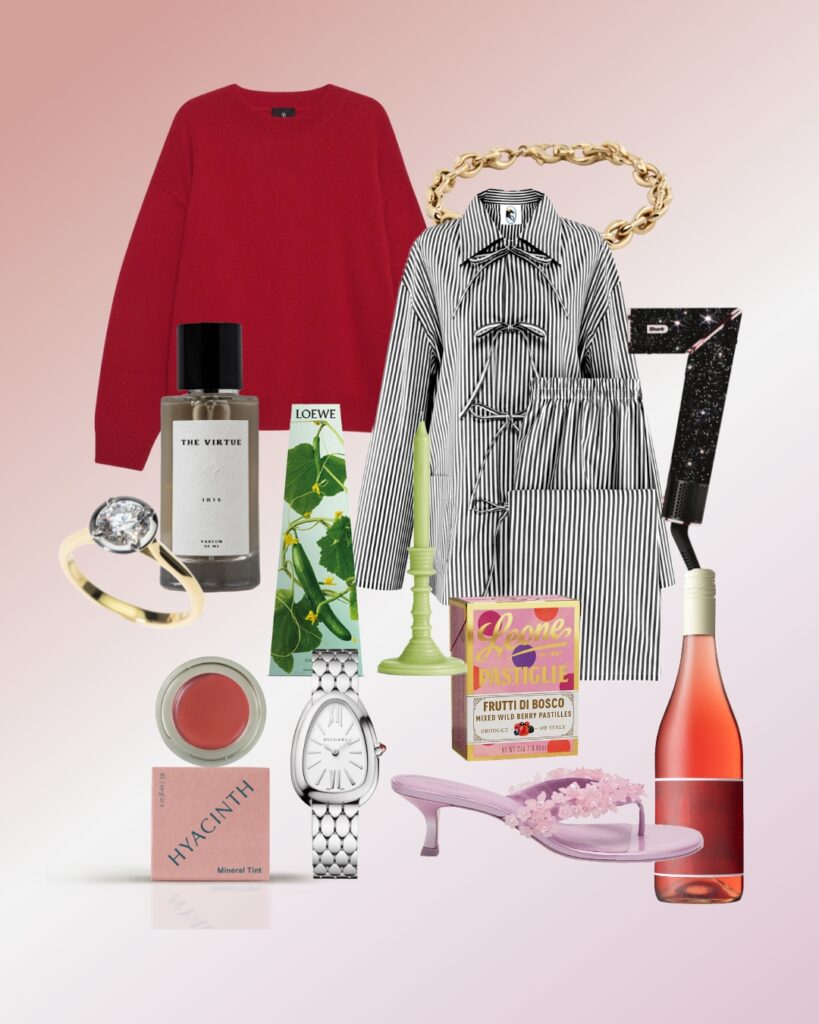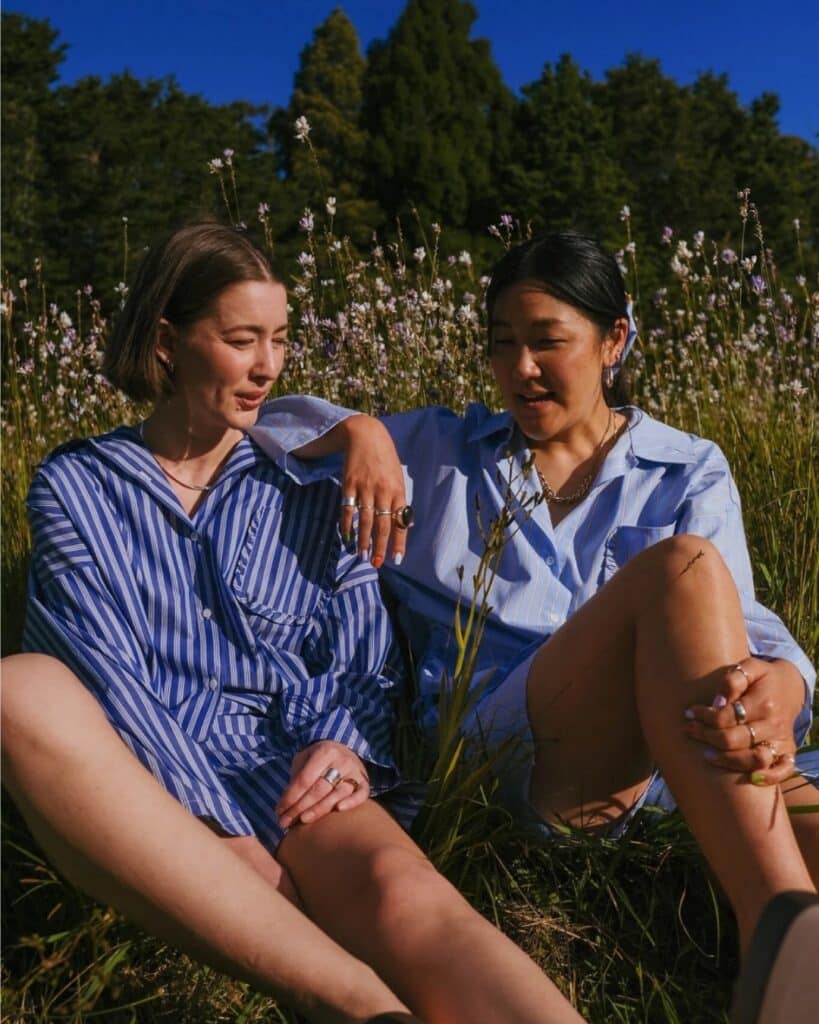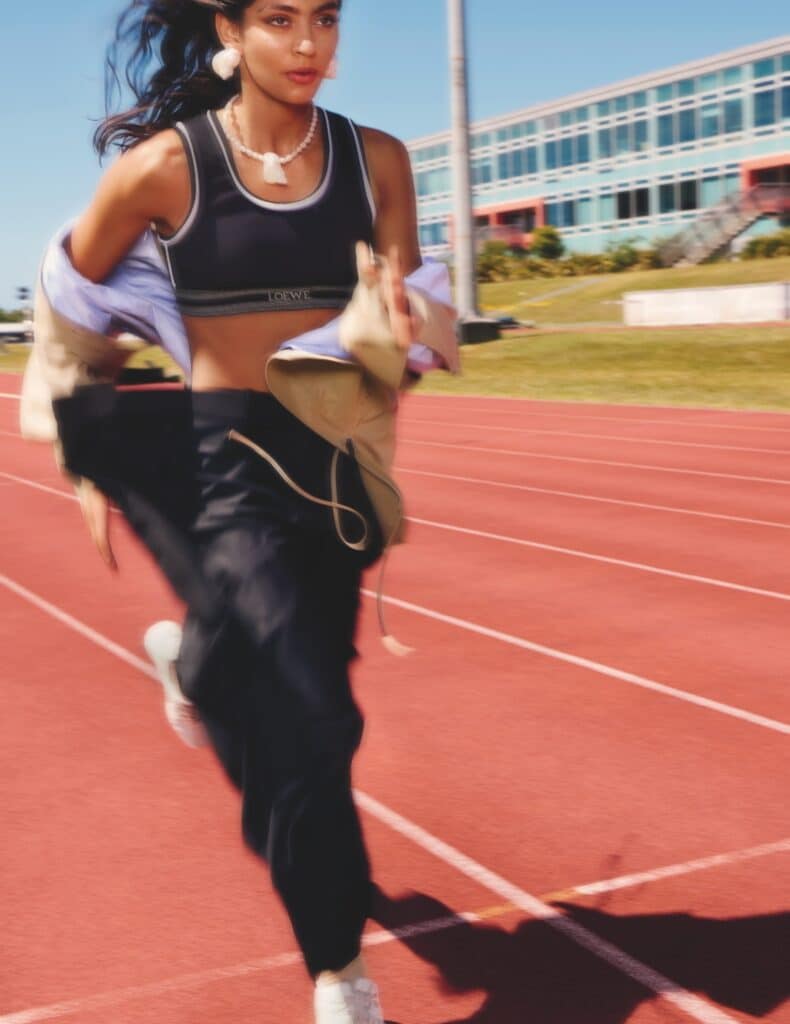PHOTOGRAPHY: SYNTHIA BAHATI
STYLING: SAMMY SALSA
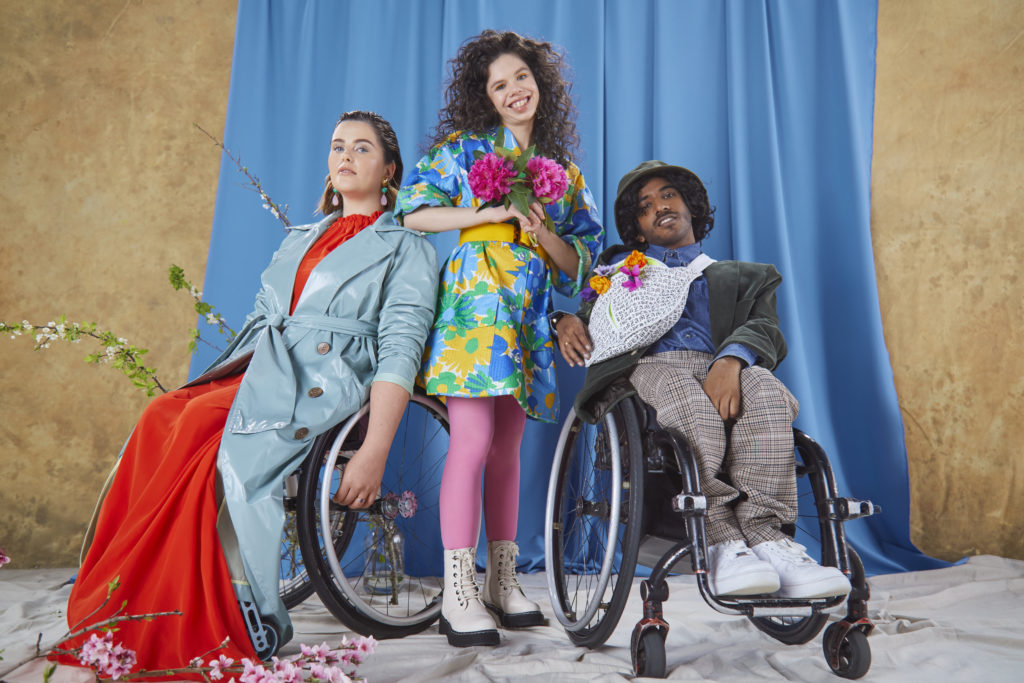
With a resume that includes interviewing Victoria Beckham; working alongside Edward Enninful, the editor-in-chief of British Vogue; and being dressed by the likes of Gucci’s Alessandro Michele, it’s clear that Sinéad Burke has the world at her fingertips. But when it came time for the Irish disability activist, teacher, and author to rally the troops to launch new accessibility-focused platform, Juniper Unlimited, it wasn’t the Beckhams that Burke turned to. Ignoring the challenges of working with a team located halfway around the globe, Burke turned to talented Kiwi bunch All is for All. Led by trailblazing accessibility advocate Grace Stratton, All is for All has been busy disrupting the norm and relentlessly pushing for change in a fashion industry that stagnates far too often. Under the guidance of Burke, the recently appointed editor-at-large, Grace and her team paired up with local creative mentors to represent disability both behind and in front of the lens. To continue this crucial conversation, we asked Rebecca Dubber and Mamie Rose MacDonald to interview Sinéad Burke exclusively for Fashion Quarterly.
TELL US ABOUT YOUR VISION FOR JUNIPER.
I would like for Juniper to be a space where disabled people feel safe and empowered to be themselves. By empowered, I mean that they feel as if they have the necessary resources, tools, and opportunities to craft stories, apply for jobs, and find products that give them agency, representation, and a blueprint for designing their own future.
WHAT PART OF THIS JUNIPER CAMPAIGN BROUGHT YOU THE MOST JOY?
The campaign opens with the phrase, “nothing about us, without us”. It’s a mantra in disability rights and disability justice movements, and while it’s easy to say and to acknowledge, it’s much more difficult to make tangible. For me, the most joyous part of the campaign was being able to meaningfully collaborate with Grace and All is for All — to share power, creativity, and responsibility. The campaign is a lesson on how to authentically welcome new voices and perspectives to the table and to give them resources to craft their own stories.
I REMEMBER MEETING YOU BRIEFLY ON THE VIDEO CHAT DURING THE SHOOT. WHAT WAS IT LIKE TO EXPERIENCE THAT FROM HALFWAY ACROSS THE WORLD?
It was incredibly surreal. We had so many meetings at strange time zones and to see it come to life while having never met anyone in person, it challenged my perception of what was possible. It was also very late at night and early in the morning for me. So, if I was being honest … it was also a challenge to stay awake!
WHAT ROLE CAN TECHNOLOGY PLAY IN BREAKING DOWN ACCESSIBILITY BARRIERS?
Technology can be a bridge to accessibility. When physical places are inaccessible, for example a coffee shop, ordering via an app can eliminate the physical barriers and create independence. But technology shouldn’t be used as a rationale to not create physical accessibility — both are essential.
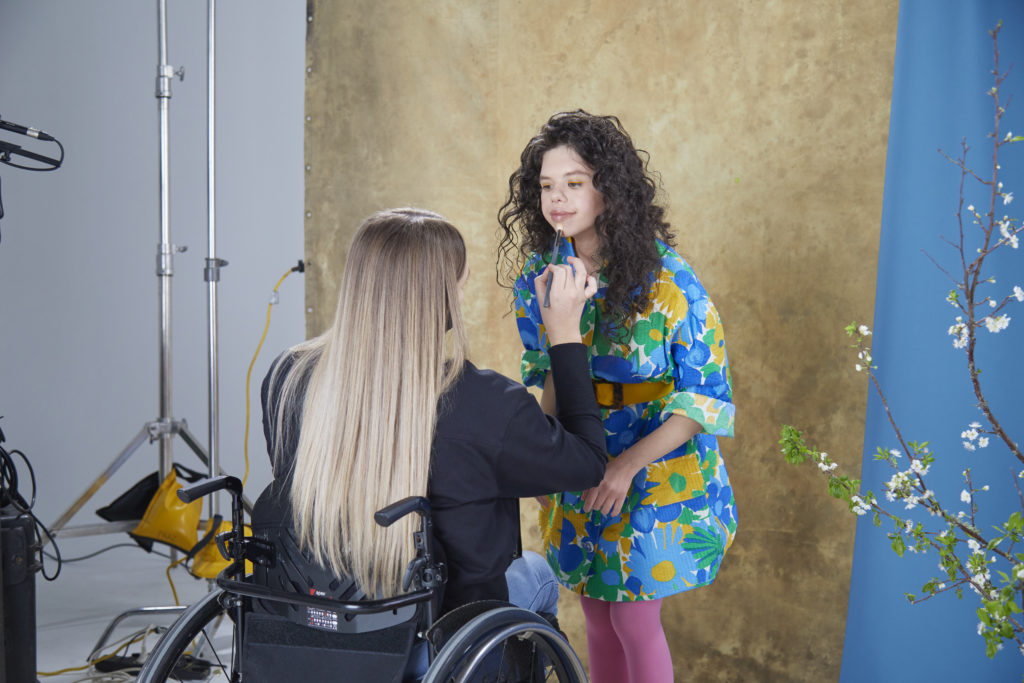
A GENIE GRANTS YOU THREE WISHES, WHAT DO YOU USE THEM FOR?
I would wish for governments to create, resource and enforce legislation that is rooted in disability rights, not charity. I would wish for accessibility to be a starting point for creativity and innovation, not merely a legislative checklist. I would wish for industries like publishing, film, fashion, and media to employ disability advisory councils to help them shape an equitable and accessible future.
TELL US ABOUT YOUR FIRST EXPERIENCE OF ACCESSIBLE FASHION AND HOW IT MADE YOU FEEL.
I was due to speak at The Business of Fashion’s Voices conference and was incredibly nervous. I was to stand in front of some of the industry’s most respected voices and putting on an altered Burberry jacket, that was military-esque in its structure and tailoring, felt calming. It fit and felt comfortable. It was my armour.
WHAT DOES IT MEAN TO TILT THE LENS? HOW DOES THIS INTERSECT WITH DESIGNING YOUR OWN FUTURE?
Tilting the Lens is a new perspective — a shift in the lens through which we view the world and a call to action to design with, not for, the advocates who realign our axis. This model of co-design is inextricably linked to designing your own future. It’s power-sharing to design a world that fits everyone.
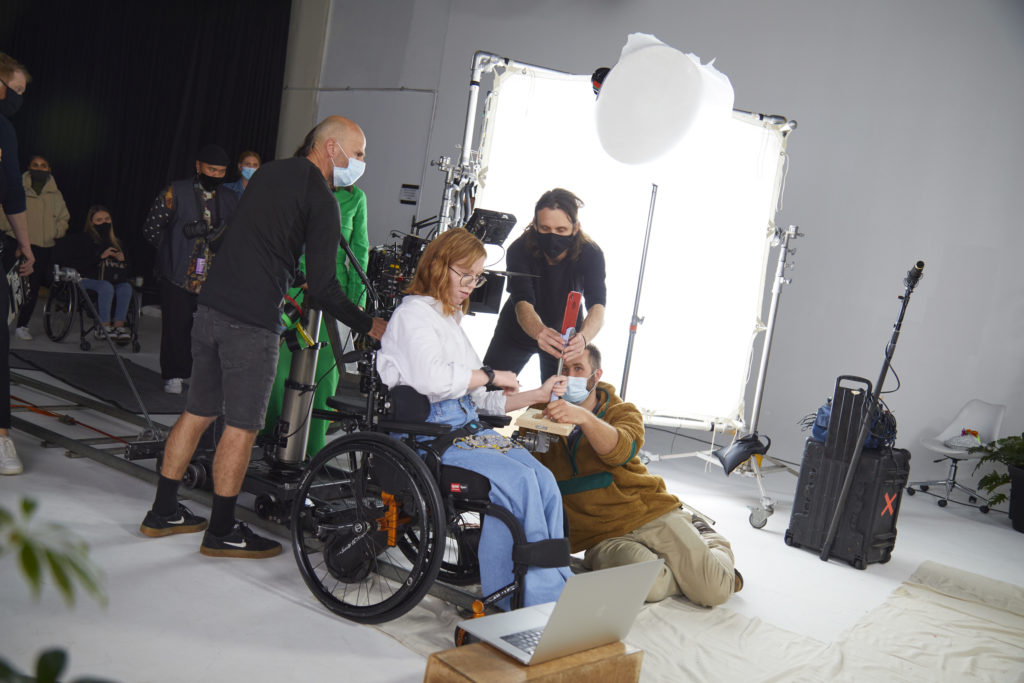
TELL US ABOUT TILTING THE LENS. WHAT DO YOU THINK ABOUT ALL IS FOR ALL AND WHAT ARE THE PARALLELS BETWEEN THE TWO?
Tilting the Lens is a consulting company that works with companies in thinking through accessibility as a design opportunity and challenge. Inclusion and diversity cannot be merely welcomed, they must be designed. I work with fashion, design, technology, and education companies and institutions to help them shape company cultures, design practices, and product innovation through a lens of accessibility and equity. I’m a huge admirer of Grace and All is for All. How they’ve disrupted systems and created opportunities for disabled people is something that exists on my mood board.
WHAT DOES FASHION MEAN TO YOU?
Fashion is a vehicle for me to express who I am to the world; to question the connotations that are often enmeshed with bodies like mine. I also consider fashion to be an opportunity to create equity in an industry that we each legally have to interact with. We all wear clothes.
YOU’RE A BIG JACINDA ARDERN FAN. WHAT IS IT THAT YOU ADMIRE ABOUT HER?
I admire Jacinda Ardern’s vulnerability. Her continuous acknowledgement of the necessity of collaboration — of learning from those with lived experiences and qualifications that are outside of her expertise. Her innate understanding that human stories change hearts, minds, culture, society, and policy.
HOW WOULD YOU EXPLAIN ‘ACCESSIBILITY’? AND WHY IS IT SO IMPORTANT?
‘Accessibility’ is the deliberate inclusion of disabled people. It is the creation of places and spaces where disabled people can be independent, where they can have agency and dignity. Accessibility can take shape in design, in policy, in language, in culture and in society. It’s important because disabled people exist and if we do not deliberately include them, the result is a deliberate, albeit maybe not intentional, exclusion.
HAS THERE EVER BEEN A MOMENT WHERE YOU’VE FELT SO FRUSTRATED BY THE CURRENT FASHION SYSTEM THAT YOU WANTED TO TURN YOUR BACK ON IT ENTIRELY? HOW DO YOU KEEP UP THE MOMENTUM TO KEEP FIGHTING?
Disability advocates are all too familiar with the feeling of frustration. It lives within the crevices of our skeleton and often weighs heavy. I think it’s because progress is often narrated as a thin line of ascension, constantly moving upward and forward. But the reality is much more disjointed and stagnant. There are days when I feel like the fashion industry might never change, that it requires too much risk to radically transform. But, we’re trying to change a system that has existed in this way since time immemorial. Change takes time and it’s important to celebrate the small wins, the nudge and tiptoe towards progress.
WHAT ADVICE WOULD YOU HAVE FOR ANYONE WHO IS PASSIONATE ABOUT THE FASHION INDUSTRY BUT FEELS LIKE THEY DON’T FIT THE CURRENT MOULD?
Don’t change who you are to fit in, change the world to fit you. This is an easy mantra to say, but don’t realign your purpose or your personality in order to fit with a system. Those facets of yourself are far too important to barter. The fashion system is wide, there is a space for everyone and it needs us to thrive. Try to find a mentor, someone who will help guide you and who will answer those questions that you wish you weren’t embarrassed to ask. Someone who will seek out opportunities for you and who will recommend you and echo your work and ambitions in rooms where decisions are made.
WHAT ROLE CAN TRADITIONAL MEDIA PLAY IN CREATING MEANINGFUL CHANGE?
There has been greater representation in advertising and fashion media. It has made an enormous difference to so many and it has shaped how they envision their future. But accessibility can’t be limited by visibility or representation. I would ask each of these companies to have an accessibility rider, ensuring that they, their clients, and their vendors, adhere to accessibility guidelines in how they distribute, publish, and market their content. So, for example — is it a company policy to use alt text, to caption videos, to have sign-language interpreters at digital events? It’s not enough to profit from the aesthetic of disability and diversity; there is so much more that we can do.


